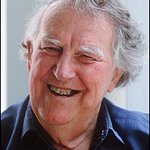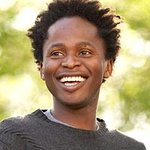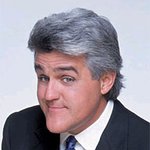By Tim Saunders on
Sir Edmund Hillary – adventurer, explorer, and philanthropist – has died of a heart attack, age 88.
The thing I will always remember about Sir Ed is his hands. They were huge, the size of frying pans. Every time I met him, his face would break into a grin that seemed to light up the room, his eyes would smile, and he would wrap one of those huge hands around mine. It was like a blanket enveloping a pea. But he was a big man. At 188cm, Sir Ed never failed to tower over everyone in the room.
But he never wanted to stand out from the crowd. Sir Edmund Hillary, conqueror of Everest, the third person to reach the South Pole by land, was incredibly humble.
“I like to think that I am a very ordinary New Zealander, not terribly bright perhaps, but determined and practical in what I do,” he once said.
Hillary never starred in a movie, he never released a song. Yet he was probably the most famous and well-respected person ever to come out of New Zealand. Born just outside of Auckland, the country’s biggest city, Hillary began his professional life as a beekeeper, as part of the family business. But a trip to the mountains that run up the southern land like a backbone gave him a love of the outdoors that would eventually lead to bigger things. A stint in the Royal New Zealand Air Force in World War II, in which he was badly burned (“I realized what it was like to feel like bacon,” he once told me), was followed by three trips to the Himalayas in Nepal.
His close friend and famous British climber, Eric Shipton, selected Hillary to be part of the 1953 expedition to Everest. However, when Shipton was replaced by John Hunt, Hillary nearly backed out of the trip. But with dogged determination, he stayed. And on May 29, 1953, Hillary and Tenzing Norgay, his Sherpa climbing partner, became the first people to stand on top of the highest peak in the world.
“Awe, wonder, humility, pride, exaltation – these surely ought to be the confused emotions of the first men to stand on the highest peak on earth, after so many others had failed,” he said in High Adventure, his book about the achievement. “But my dominant reactions were relief and surprise. Relief because the long grind was over and the unattainable had been attained. And surprise because it had happened to me, old Ed Hillary, the beekeeper, once the star pupil of Tuakau District School, but no great shakes at Auckland Grammar and a no-hoper at university – first to the top of Everest! I just didn’t believe it.”
A knighthood from the newly-crowned Queen Elizabeth followed, much to Hillary’s horror: “It was a tremendous honor, of course, but I had never really approved of titles and couldn’t really imagine myself possessing one… I could see myself walking down Broadway, Papakura [his hometown in New Zealand], in my tattered overalls and the seat out of my pants, and I thought ’That’s gone forever. I’ll have to buy a new pair of overalls now’.”
In a lasting testament to his humbleness, Hillary always maintained that he and Tenzing – who died in 1986 – reached the summit together, despite repeated questioning over who actually stepped on top first. However, in later life, Hillary did finally admit that he stepped onto the summit a few steps ahead of Tenzing, but he always insisted that the pair did it as a team, and to single out one or other of them was inherently wrong.
Back in New Zealand, Hillary married Louise Rose, and they later had three children, Belinda, Sarah and Peter. Sir Ed then continued a life of climbing and adventure, which included involvement in the 1958 British Trans-Antarctic expedition lead by Sir Vivien Fuchs. Hillary’s job was to use three small tractors to lay a supply trail for Fuchs’ party, but in a controversial decision he raced to the pole himself and reached it before Fuchs. He was the first person to reach the South Pole over land since Amundsen and Scott. Antarctica always remained a special place for Sir Ed, and he visited the frozen continent for the last time in 2005. Both he and his son, Peter, have campaigned extensively for better environmental laws in Antarctica over the years, a topic that I discussed at length with Peter in 1999.
But it was his continuing work with the native Sherpa people in Nepal that Sir Ed wants to be remembered for. The Sherpas had long been used by explorers as porters in the Himalayas, but they remained uneducated and their living conditions were primitive. Many had no access to clean water, and others suffered from debilitating yet treatable medical conditions.
“It was impossible not to see that they lacked all the things we regard as essential in life,” said Hillary. “They didn’t have any schools, and they didn’t have any medical care or anything of this nature. I suddenly decided that instead of just talking about it, why didn’t I try and do something about it.”
In 1960, Hillary established the Himalayan Trust, a non-profit organization designed to ease poverty in remote Nepalese villages. Since then, the Trust has increased its fold to include reforestation programs, cultural preservation, and emergency relief work.
Over the years, the Trust has built 3 hospitals, 13 health clinics, and 30 schools for the Sherpa people. They have provided training for teachers, and have been involved in the construction of bridges, water resources, and airstrips. Every year until the 1990s, Hillary would lead groups of volunteers to the Himalayas, and thousands of Nepalis now owe their education and health to his generosity. Six months of every year were spent outside New Zealand, on the fundraising trail.
In Nepal, Hillary is seen as a god, and his passing has been especially hard for those who have worked closely with him on his projects.
“He was a hero and a leader for us,” said Bhoomi Lama of the Nepal Mountaineering Association in Katmandu. “He did a lot for the people of the Everest region and will always remain in our hearts.”
And it is work Hillary does not want to stop after his death.
“When I kick the bucket… of all the things I would like to be kept going, the things I would really feel had some continuing activity, would unquestionably be my Sherpa schools.”
Hillary’s work with the Sherpas helped him to get back on his feet after the death of his wife and youngest daughter in a plane crash in the Himalayas in 1975, and in 1989 he married June Mulgrew, widow of fellow climber and explorer, Peter Mulgrew.
He was also a special ambassador for UNICEF to promote Nepalese aid, and continued to advocate for tougher environmental laws in the Himalayas.
The native Maori people of New Zealand have a phrase they say when a well-respected person passes away – “Ka hinga te totara i te wao nui a Taane engari Mate atu he teeteekura, Whakaete mai he teeteekua … A mighty totara tree has fallen in Tane’s forest.” Sir Edmund Hillary may have been the mightiest totara tree of them all.
He will be sadly missed by the people of Nepal, New Zealand, and adventurers everywhere.
“In some ways I believe I epitomize the average New Zealander. I have modest abilities, I combine these with a good deal of determination… and I rather like to succeed.”
Copyright © 2008 Look to the Stars






